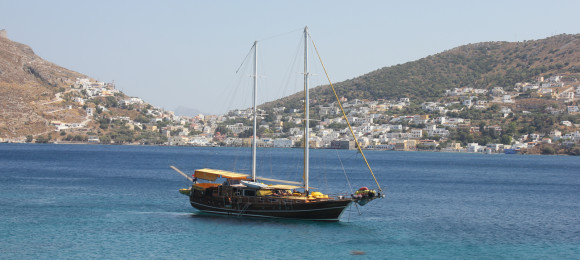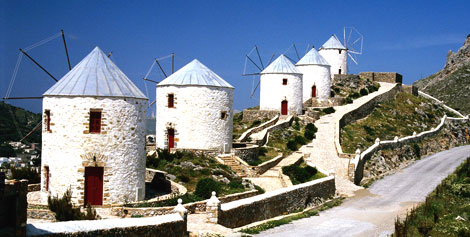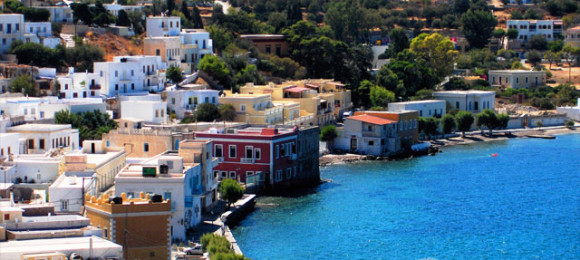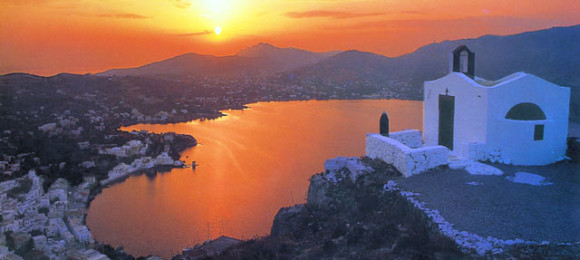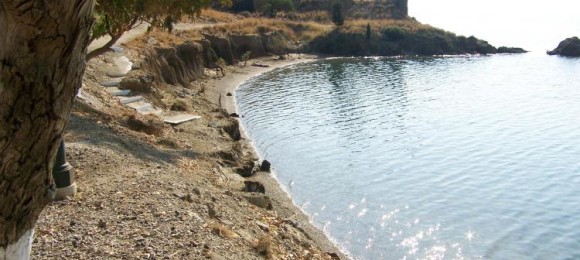Overview of Leros
Leros is one of the most unexplored Greek islands, ignored by mass tourism, yet truly accommodating, with so much to offer. It is located in the Dodecanese, between Patmos and Kalymnos, surrounded by many small pristine islands, perfect for boat excursions. The island’s hilly morphology and fascinating coastline of tranquil beaches underline its gentle, low profile. Indeed, Leros boasts discreetly of its unspoiled beauties, addressing to travelers who dislike glamour and love the simple things in life.
It used to be one of the most misunderstood Greek islands (due to its psychiatric hospital and also as a former place of exile during the Greek dictatorship). Nowadays, free from the negative memories of the past, it offers satisfactory touristic infrastructure, a number of traditional villages to explore, impressive beaches, decent sightseeing and abundant fresh fish. World War II and the 30-year-old Italian occupation have left their marks on the island (war memorials and sunken shipwrecks are scattered all over). The same goes for the island’s major historical event, the notorious battle of Leros in 1943, which inspired the novel –and film- “The Guns of Navarone”.
Lakki, one of the best natural ports in the Mediterranean, used to be the main Italian naval station in WWII. The town still carries the remnants of that era, combining the Aegean housing style with the Italian rationalist architecture (found in many neoclassical buildings, the Agora, cinema, Town Hall, the Leros Hotel, etc). The island’s picturesque second port is Agia Marina, a popular resort with whitewashed houses, mansions, a public fish market and a typical Greek island atmosphere. Agia Marina is actually the haven of Leros’ beautiful capital of Platanos, built amphitheatrically under the island’s landmark Castle of Panagia, ideal for an afternoon stroll. At the south of Platanos, lies the hospitable fishing village of Pandeli, a representative example of the island’s settlements. Keeping things simple, Leros urges you to forget about the mainstream and experience the lifestyle of an authentic Greek island.
Photo gallery of Leros
Beaches Food Things to see & do
Kryfos
: A picturesque secluded pebbly cove, one of the prettiest on the island, hidden among the rocks. It is accessible preferably by boat, ideal for relaxation and snorkeling.Alinda
: The longest and most popular beach on Leros is situated at the homonymous touristic resort, offering all kinds of amenities, water sports and taverns. It is sandy, with tamarisk trees and rather crowded.Blefoutis
: A quiet pebbly beach located at the northern settlement of the same name. It features tamarisk trees and a few amenities, including tavernas with fresh fish.Gourna
: A peaceful, long seashore with dark colored sand, crystal blue shallow waters, tamarisk trees and only the basic amenities. Nearby you can also swim in the beaches of Drymonas and Kokkali.Vromolithos
: One of the most beautiful on Leros, this pebbly and sandy beach offers many amenities and tamarisk trees that provide nice shadow.Dyo Liskaria
: A sandy, fully organized and wind-protected beach. It is young people’s favorite, thanks to the beach bars here, but it also features a more low-key part.Taverna Dimitris o Karaflas
: Vromolithos, Greek cuisine.Fishtavern Restaurant Gourna
: Gourna, Greek cuisine.Taverna Paradisos
: Vromolithos, Greek cuisine.Psaropoula
: Panteli, Greek cuisine.Mylos Fish Restaurant
: Agia Marina, Greek, Mediterranean cuisine and sea food.Church of Agia Kioura
: Located near the fishing village of Partheni, at the north of Leros, it is a preserved monument that boasts of unique frescoes created by the political prisoners who were exiled on the island.The Castle of Panagia (Castle Pandeliou)
: The island’s landmark, well preserved medieval castle sits on the hilltop Apitiki. It was built on the remains of an ancient acropolis (excavations also revealed a nearby 7th c BD tomb) and offers magnificent views. At the west side of the castle you can visit the beautiful church of Panagia, the island’s top pilgrimage centre with its ecclesiastical museum. Note also that the castle is accessible either via a path of 500 stairs or the main road.Two trademark chapels
: Panagia Kavouradena (at the coastal village of Xirokambos, built at a scenic spot among the rocks) and Agios Isidoros (built on a rock at the area of Kokkali, it seems to emerge from the seawater).The Folk Museum
: Housed in the beautifully renovated Tower of benefactor Parisis Belenis, at Alinda.The Castle of Lepides
: Also known as Paleokastro, it is built at the hilltop of the settlement of Lepides, on the remains of an ancient acropolis.Island hopping
: Patmos, Lipsi and Kalymnos are three of the best neighboring excursion options. You can also hop on one of the regular boats that take you to the small islands situated around Leros, such as Archangelos, Trypiti, Agia Kyriaki, Farmakonisi, etc.Open WWII museum
: Leros’ seabed is practically an open WWII museum, featuring a number of shipwrecks and war planes sunk during that time. Among them, the torpedo ship “Queen Olga”, located at the area of Merikia, near Lakki.Feasts & Festivals
: The feasts of Agia Marina (17th July) and Panagia (15th August) are the two major ones on the island. There is also a Wine Feast that takes place in early August. The “Alindia” (marine sport races) and the “Boulafendia” (sport and art events dedicated to the memory of the native cardio-surgeon Boulafentis) are also held in August. On 26th September the island hosts various events to commemorate the sinking of the torpedo ship “Queen Olga”.Products & Specialties
: Leros is famous for its delicious fresh fish (and salted fish), as well as different types of cheese (myzithra, ladotyro, krasotyro), cheese pie, thyme, pougia (type of sweets) and the local drink soumada (made of bitter almond).Map of Leros
Reviews of Leros
John said:


